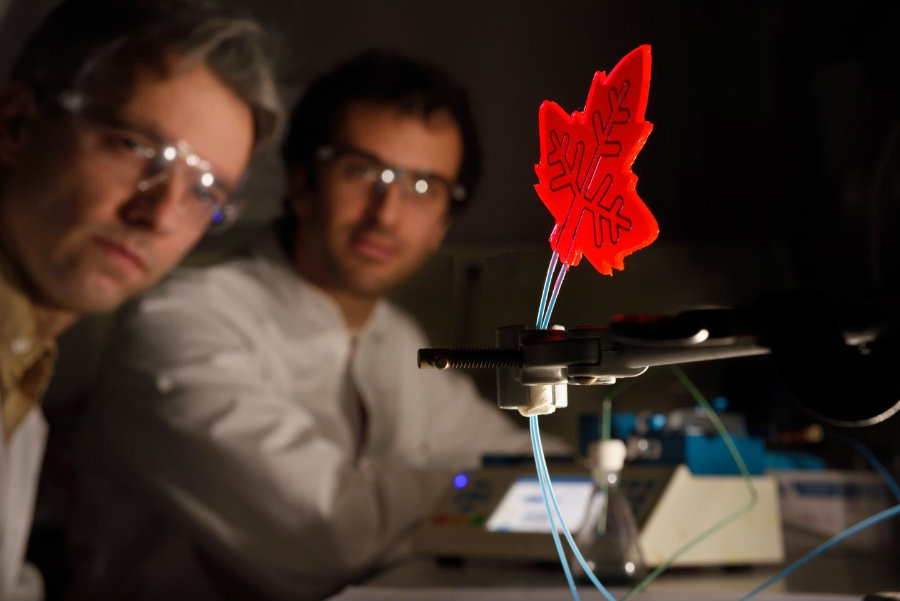Scientists have managed to mimic photosynthesis in drug “mini-factory” shaped like a leaf. The artificial leaves work using sunlight to make molecules react, making it possible to create drugs anywhere around the world. Chemical engineers believe the product could be utilized in five to ten years in dense jungles or even on Mars.
A team of Dutch researchers from the Eindhoven University of Technology created the artificial leaf that can produce drugs sustainably and cheaply no matter where in the globe as long as there is sunlight.

The project was inspired by how plants can collect enough sunlight to produce their food, a mechanism that scientists have tried to simulate for years but could not achieve, until now.
Through photosynthesis, plants use their antenna molecules to capture energy from the sun and collect it in the reaction centers of its leaves. There, the accumulated solar energy start the reaction and creates plants’ own food.
Chemical engineers struggled to use sunlight as a power source to make molecules to react because it did not generate enough energy to start the chemical reaction. The Dutch team discovered that the materials to collect sunlight were the problem and came across with new components to make the drug mini-factory a reality.
The drug ‘mini-factory,’small as a leaf but easily linked to others to create drug-making trees
Scientists used luminescent solar concentrators (LSCs), a material that is capable of capturing sunlight as plants do. LSCs have special light-sensitive molecules that capture large quantities of solar energy and transformed it into a particular color, red.
The energy is then conducted to the edges of the artificial leaf through light conductivity. It pumps liquid through thin channels and directly exposes it to the collected sunlight that allows generating more fuel to create the drug.
Led author Dr. Timothy Noël and his colleagues combined the idea of LSC with microchannels in a leaf made of silicon rubber LSC to create fluid movement inside the artificial leaf.
The microchannels force scientists to create the leaf like a small mini factory, but each artificial leaf can be easily linked. Thus, drug-making trees can be established around the world, even in other planets, and create medicines as long as they received enough solar energy. Malaria shots could be produced in dense jungles, and paracetamol could be made on Mars.
The experiment was more than successful, being able to produce drugs even in cloudy days. Those tests with diffused sunlight had a chemical production 40 percent higher than experiments performed in similar environments without LSC material, explained Noël.
“We still see plenty of possibilities for improvement. We now have a powerful tool at our disposal that enables the sustainable, sunlight-based production of valuable chemical products like drugs or crop protection agents,” said Dr. Noël in an Eindhoven University of Technology press release
Current drug production is toxic since it uses different chemicals and fossil fuels. In contrast, the new artificial leaves use sustainable and cheap reactions that are also faster than traditional methods.
Source: Eindhoven University of Technology
